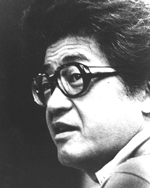 W
WKōbō Abe , pen name of Kimifusa Abe , was a Japanese writer, playwright, musician, photographer and inventor. Abe has been often compared to Franz Kafka and Alberto Moravia for his modernist sensibilities and his surreal, often nightmarish explorations of individuals in contemporary society.
 W
WGenpei Akasegawa was a pseudonym of Japanese artist Katsuhiko Akasegawa , born March 27, 1937 – October 26, 2014 in Yokohama. He used another pseudonym, Katsuhiko Otsuji , for literary works. A member of the influential artist groups Neo-Dada Organizers and Hi-Red Center, Akasegawa went on to maintain a multi-disciplinary practice throughout his career as an individual artist. He has had retrospective exhibitions at the Hiroshima City Museum of Contemporary Art, Chiba City Museum, and Oita City Museum. His work is in the permanent collection at Museum of Modern Art in New York. Artist Nam June Paik has described Akasegawa as “one of those unexportable geniuses of Japan.”
 W
WShūsaku Endō was a Japanese author who wrote from the rare perspective of a Japanese Catholic. Internationally, he is known for his 1966 historical fiction novel Silence, which was adapted into a 2016 film of the same name by director Martin Scorsese. He was the laureate of several prestigious literary accolades, including the Akutagawa Prize and the Order of Culture, and was inducted into the Roman Catholic Order of St. Sylvester by Pope Paul VI.
 W
WKosuke Gomi was the pen-name of Yasusuke Gomi, a Japanese novelist active during the Shōwa period of Japan. He is primarily known for his popular fiction on historical themes.
 W
WAshihei Hino was a Japanese author, whose works included depictions of military life during World War II. He was born in Wakamatsu and in 1937 he received the prestigious Akutagawa Prize for one of his novels, Fun'nyōtan . At that moment he was a soldier for the Japanese army in China. He then got promoted to the information corps and published numerous works about the daily lives of Japanese soldiers. It is for his war novels that he became famous during the war. His book Mugi to Heitai sold over a million copies.
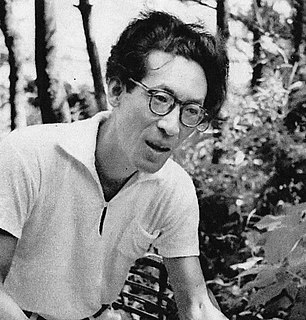 W
WYoshie Hotta was a Japanese writer of novels, short stories, poetry and essays, noted for his political consciousness. His most acclaimed works include Hiroba no kōdoku, which was awarded the Akutagawa Prize, and Kage no bubun. Hotta has also been associated with the Atomic bomb literature genre.
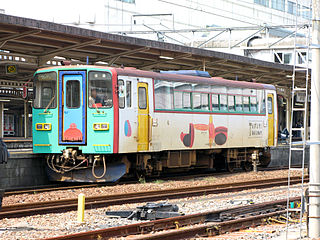 W
WMasuo Ikeda was a Japanese painter, printmaker, illustrator, sculptor, ceramist, novelist, and film director from Nagano Prefecture.
 W
WYasushi Inoue was a Japanese writer of novels, short stories, poetry and essays, noted for his historical and autobiographical fiction. His most acclaimed works include The Bullfight, The Roof Tile of Tempyō and Tun-huang.
 W
WShintaro Ishihara is a Japanese politician and writer who was Governor of Tokyo from 1999 to 2012. Being the former leader of the radical right Japan Restoration Party, he is one of the most prominent nationalists in modern Japanese politics. An ultranationalist, he is infamous for his racist remarks, xenophobic views and hatred of Chinese and Koreans, including using the antiquated pejorative term "sangokujin".
 W
WJun Ishikawa was the pen name of a modernist author, translator and literary critic active in Shōwa period Japan. His real name was Ishikawa Kiyoshi.
 W
WTatsuzō Ishikawa was a Japanese author. He was the first winner of the Akutagawa Prize.
 W
WTakeshi Kaikō was a prominent post-World War II Japanese novelist, short-story writer, essayist, literary critic, and television documentary writer. He was distinguished by his knowledge, intellect, sense of humor and conversational skills, and although his style has been criticized as wordy and obtuse, he was one of the more popular Japanese writers in the late Shōwa period.
 W
WMieko Kawakami is the author of the internationally best-selling novel, Breasts and Eggs, a New York Times Notable Book of the Year and one of TIME’s Best 10 Books of 2020.
 W
WMorio Kita was the pen name of Sokichi Saitō , a Japanese psychiatrist, novelist and essayist.
 W
WNobuo Kojima was a Japanese writer prominent in the postwar era. He is most readily associated with other writers of his generation, such as Shōtarō Yasuoka, who describe the effects of Japan's defeat in World War II on the country's psyche.
 W
WKōno Taeko is one of the most important Japanese writers of the second half of the twentieth century, someone whose influence on contemporary Japanese writers is acknowledged to be immeasurable. Kōno is one of a generation of remarkable women writers who made an appearance in Japan in the 1960s and 1970s and who include Kurahashi Yumiko, Mori Mari, Setouchi Harumi, and Takahashi Takako. She also established a reputation for herself as an acerbic essayist, a playwright and a literary critic. By the end of her life she was a leading presence in Japan's literary establishment, one of the first women writers to serve on the Akutagawa Literary Prize committee. Oe Kenzaburo, Japan's Nobel Laureate, described her as the most "lucidly intelligent" woman writers writing in Japan, and the US critic and academic Masao Miyoshi identified her as among the most "critically alert and historically intelligent." US critic and academic Davinder Bhowmik assesses her as “…one of the truly original voices of the twentieth century, beyond questions of gender or even nationality.” A writer who deals with some quite dark themes, Kōno is known to readers in English through the collection of short stories Toddler-Hunting and Other Stories, which draws together her best writing from the 1960s.
 W
WLi Qinfeng, known by her pen name Li Kotomi (りことみ), is a Taiwanese-born fiction writer, translator and essayist, who writes in Mandarin and Japanese. Her Japanese novel Hitorimai received the 60th Gunzo New Writers' Award for Excellence in 2017. In 2021, her latest novel won the 165th Akutagawa Prize.
 W
WSaiichi Maruya was a Japanese author and literary critic.
 W
WSeichō Matsumoto was a Japanese writer, credited with popularizing detective fiction in Japan.
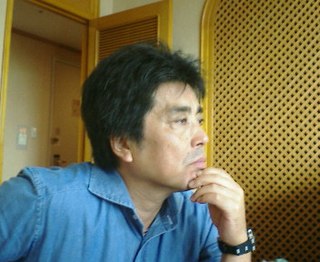 W
WRyū Murakami is a Japanese novelist, short story writer, essayist and filmmaker. His novels explore human nature through themes of disillusion, drug use, surrealism, murder and war, set against the dark backdrop of Japan. His best known novels are Almost Transparent Blue, Audition, Coin Locker Babies and In the Miso Soup.
 W
WFuminori Nakamura is the pseudonym of a Japanese author. Nakamura came to international attention when he won the 2010 Kenzaburō Ōe Prize for his novel, The Thief. The English translation of the novel was well received.
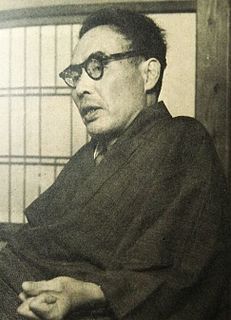 W
WGishū Nakayama was the pen-name of a Japanese writer active in Shōwa period Japan. His real name was Yoshihide Takama.
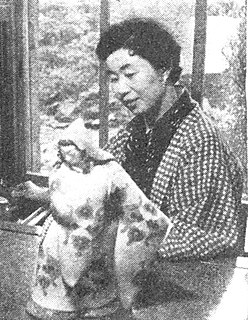 W
WTsuneko Nakazato was the pen-name of a novelist in Shōwa period Japan. Her real name was Nakazato Tsune.
 W
WKenzaburō Ōe is a Japanese writer and a major figure in contemporary Japanese literature. His novels, short stories and essays, strongly influenced by French and American literature and literary theory, deal with political, social and philosophical issues, including nuclear weapons, nuclear power, social non-conformism, and existentialism. Ōe was awarded the Nobel Prize in Literature in 1994 for creating "an imagined world, where life and myth condense to form a disconcerting picture of the human predicament today".
 W
WAnna Ogino is a Japanese author and professor of literature at Keio University. She has won the Akutagawa Prize, the Yomiuri Prize, and the Itō Sei Literature Prize.
 W
WYoshiko Shibaki (芝木好子) was a Japanese novelist. She became the second woman to win the Akutagawa Prize in 1941.
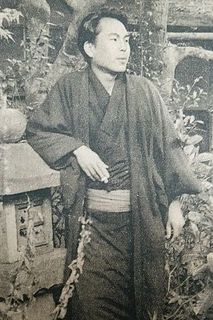 W
WMotoyoshi Shimizu was the pen name of a Japanese novelist and poet, active during the Shōwa and Heisei periods of Japan. His real name was Shimizu Motoyoshi (清水基嘉), pronounced the same, but written in different kanji.
 W
WJunzō Shōno was a Japanese novelist. A native of Osaka, he began writing novels after World War II. He won the 1954 Akutagawa Prize for his book Purusaido Shokei. Shōno's other award-winning books include Seibutsu, for which he won the Shinchosha literary prize, Yube no Kumo, which was awarded the 1965 Yomiuri Prize, and Eawase which took the Noma literary prize.
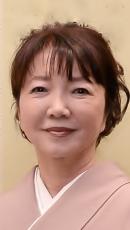 W
WNobuko Takagi is the professional name of Nobuko Tsuruta , a Japanese author. She has won the Akutagawa Prize and the Tanizaki Prize, she has been named a Person of Cultural Merit, and her work has been adapted for film.
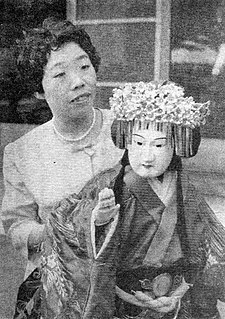 W
WSeiko Tanabe was a Japanese author. She graduated from the Department of Japanese Literature of Shōin Joshi Senmon Gakkō. Author of numerous novels, she won the Akutagawa Prize, Yomiuri Prize, and Asahi Prize, and received the Order of Culture for her contributions to literature.
 W
WYōko Tawada is a Japanese writer currently living in Berlin, Germany. She writes in both Japanese and German. Tawada has won numerous literary awards, including the Akutagawa Prize, the Tanizaki Prize, the Noma Literary Prize, the Izumi Kyōka Prize for Literature, the Gunzo Prize for New Writers, the Goethe Medal, the Kleist Prize, and a National Book Award.
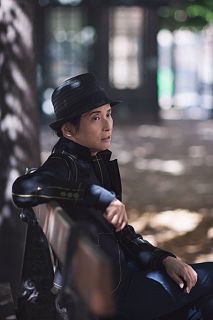 W
WHitonari Tsuji is a Tokyo-born Japanese writer, composer, and film director. In his film and singing work he uses the name Jinsei Tsuji, an alternative reading of the Japanese writing of his name. He debuted as a writer in 1989. His books and stories have been bestsellers in Japan as well as overseas, with his work being translated into 20 languages and selling over ten million copies.
 W
WRisa Wataya is a female Japanese novelist from Kyoto. Her short novel Keritai senaka won the Akutagawa Prize and has sold more than a million copies. Wataya has also won the Bungei Prize and the Kenzaburo Oe Prize. Her work has been translated into German, Italian, French, Thai, Korean, and English.
 W
WYoshinori Yagi was a noted Japanese author.
 W
WShōtarō Yasuoka was a Japanese writer.
 W
WJunnosuke Yoshiyuki was a Japanese novelist and short-story writer, and a member of the so-called "Third Generation of Postwar Writers" (第3の新人).
 W
WMiri Yu is a Zainichi Korean playwright, novelist, and essayist. Yu writes in Japanese, her native language, but is a citizen of South Korea.